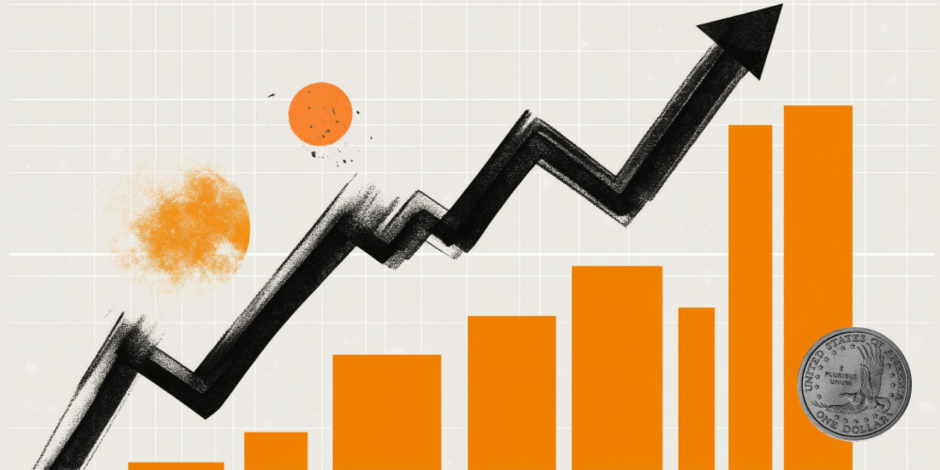US Dollar continues under pressure as markets digest GDP figures
- The US Dollar remains soft after the Fed left rates unchanged and revised its inflation assessment.
- US GDP growth slowed to 2.3% in Q4, missing forecasts of 2.6% and down from 3.1% in Q3.
- The Fed removed prior language on inflation progress, stating it remains “somewhat elevated.”
- Powell’s mixed messaging led to uncertainty, initially pushing the DXY higher before erasing gains.

The US Dollar Index (DXY), which measures the value of the US Dollar against a basket of currencies, hovers below 108.00 as traders react to the Federal Reserve’s (Fed) latest decision and a weaker-than-expected US Gross Domestic Product (GDP) print. The Fed maintained its policy stance but removed previous references to inflation making progress toward the 2% goal, sparking hawkish speculation.
However, Powell later downplayed this shift, calling it a “language cleanup,” which softened the initial market reaction. Meanwhile, GDP growth missed expectations, while inflation components within the report suggested underlying price pressures persist.
Daily digest market movers: US Dollar struggles as GDP miss fuels uncertainty
- The Federal Reserve held interest rates steady at 4.25%-4.50% as widely expected but removed prior language stating that inflation was making progress toward the 2% target. This adjustment was initially seen as hawkish before Powell downplayed its significance.
- During the press conference, Powell clarified that the inflation language change was merely a “language cleanup” and not an intentional policy shift. His comments softened the market's hawkish reaction and led to a pullback in the US Dollar.
- Powell emphasized that the policy stance remains restrictive and that rate decisions will be data-dependent. He refrained from signaling any urgency to cut rates, reinforcing the Fed’s cautious approach.
- The United States Q4 GDP growth slowed to 2.3%, missing the 2.6% forecast and falling from 3.1% in Q3. This lower-than-expected reading raised concerns about slowing economic momentum.
- The Personal Consumption Expenditure (PCE) price index rose to 2.3%, accelerating from 1.5% in the prior quarter, suggesting that inflation remains persistent despite the overall GDP slowdown.
- Core PCE, the Fed’s preferred inflation measure, remained unchanged at 2.2%, missing expectations for 2.5%. This softer-than-expected inflation reading fueled mixed reactions in the market.
- Initial Jobless Claims dropped to 207,000 for the most recent week, below estimates of 220,000 and down from the prior week’s 223,000 reading, signaling continued strength in the labor market.
- Continuing Jobless Claims declined to 1.858 million from 1.900 million, suggesting that job market conditions remain stable despite broader economic uncertainty.
DXY technical outlook: Dollar struggles to hold 108.00
The US Dollar Index attempted to recover above 108.00 but remains under pressure as traders reassess Fed policy signals. The Relative Strength Index (RSI) is still below 50, indicating weak bullish momentum, while the MACD’s red bars show ongoing bearish pressure.
The index risks further downside if it fails to hold 107.80, with potential support at 107.50. However, if sentiment shifts, resistance near 108.50 could cap gains before any meaningful rally.
Inflation FAQs
Inflation measures the rise in the price of a representative basket of goods and services. Headline inflation is usually expressed as a percentage change on a month-on-month (MoM) and year-on-year (YoY) basis. Core inflation excludes more volatile elements such as food and fuel which can fluctuate because of geopolitical and seasonal factors. Core inflation is the figure economists focus on and is the level targeted by central banks, which are mandated to keep inflation at a manageable level, usually around 2%.
The Consumer Price Index (CPI) measures the change in prices of a basket of goods and services over a period of time. It is usually expressed as a percentage change on a month-on-month (MoM) and year-on-year (YoY) basis. Core CPI is the figure targeted by central banks as it excludes volatile food and fuel inputs. When Core CPI rises above 2% it usually results in higher interest rates and vice versa when it falls below 2%. Since higher interest rates are positive for a currency, higher inflation usually results in a stronger currency. The opposite is true when inflation falls.
Although it may seem counter-intuitive, high inflation in a country pushes up the value of its currency and vice versa for lower inflation. This is because the central bank will normally raise interest rates to combat the higher inflation, which attract more global capital inflows from investors looking for a lucrative place to park their money.
Formerly, Gold was the asset investors turned to in times of high inflation because it preserved its value, and whilst investors will often still buy Gold for its safe-haven properties in times of extreme market turmoil, this is not the case most of the time. This is because when inflation is high, central banks will put up interest rates to combat it. Higher interest rates are negative for Gold because they increase the opportunity-cost of holding Gold vis-a-vis an interest-bearing asset or placing the money in a cash deposit account. On the flipside, lower inflation tends to be positive for Gold as it brings interest rates down, making the bright metal a more viable investment alternative.
Author

Patricio Martín
FXStreet
Patricio is an economist from Argentina passionate about global finance and understanding the daily movements of the markets.

















